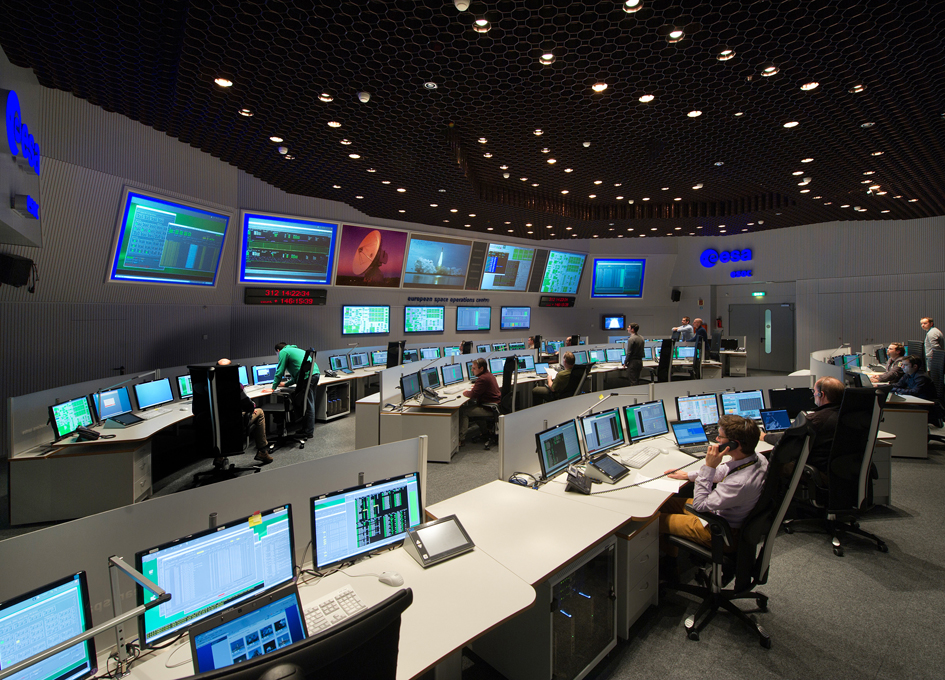Increasing Use of Artificial Intelligence In Satellite Operations

Satellites are carrying increasingly diverse payloads into orbit, and resolving their often-conflicting onboard schedules requires programming wizardry and a little help from artificial intelligence.
Adding experimental payloads to already planned satellites is a smart, cost-effective way to provide critical in-orbit testing of new technologies.
For example, in addition to its prime data telecommunication payload, Alphasat operated by Inmarsat as part of a commercial fleet and the largest European telecom satellite ever flown carries four ‘hosted’ Technology Demonstration Payloads provided by ESA and the DLR German Aerospace Center, whose operations are coordinated by ESA.
These hosted devices, however, all function quite independently of each other and have different and often conflicting requirements and limitations on when they can operate, and how they should avoid interference with the satellite’s prime telecom mission.
That’s where an ESA-developed artificial intelligence (AI) system dubbed TECO, for “Technology Demonstration Payload ESA Coordination Office” is making a valuable contribution, saving time and human effort by offering a service that optimises payload activity scheduling.
Crunching numbers without the humans
The new planning and scheduling system was originally developed for ESA’s Telecommunication and Integrated Application programmes by engineers at ESOC, the Agency’s operations centre in Darmstadt, Germany, as a prototype for validating AI software. It has now evolved into a proven system that used for Alphasat.
Techniques used in TECO processing are based in part on experience gained with earlier automated planning systems developed for missions such as Mars Express and SOHO.
For the Alphasat demonstration payloads, TECO accepts proposed activity requests from each of the four payload control centres, applies hundreds of limitations and constraints from each of the four devices, as well as from the satellite platform and its prime payload mission, and then crunches the numbers to produce a detailed weekly payload activity schedule. This typically includes over 100 separate payload actions and, in some cases, more than 500.
The process is automated, and humans need intervene only if an anomalous conflict is identified that can’t be resolved by the system’s AI engine.
“To date, feedback from our customers the centres that operate the four test payloads on board Alphasat has been extremely positive,” says Nicola Policella, the lead designer and now TECO service manager.
“It’s automated, it saves a great deal of human effort and, most importantly, it reduces the risk of human error while allowing the payload operators to focus on problems that AI and automation alone can’t solve.”
Boosting Alphasat Alphasat was launched in July 2013 into geostationary orbit as a publicprivate partnership the biggest of its kind between ESA and UK operator Inmarsat.
It expands Inmarsat’s global mobile telecommunication network, delivering new capabilities in terms of performance and availability. It is also the first flight for Alphabus, the new European telecom platform.
The satellite provides an ideal test bed for ESA’s four Technology Demonstration Payloads, comprising a startracker and a laser communication terminal, both developed and built in Germany (by Jena Optronik and Tesat, respectively) with funding from DLR, an extremely high-frequency transponder, provided by Italy’s ASI space agency and industrial partners Thales Alenia Space and Space Engineering, and a radiation monitor from the Efacec Group, Portugal.
The TECO scheduling system was developed at ESOC in 201112 and entered operation at the end of 2013.
Applying automation “In recent years, ESA’s mission teams have increasingly applied automation and AI techniques to solve complex scheduling problems related to spacecraft operations in general,” says Kim Nergaard, Head of ESA’s Advanced Mission Concepts Section.
“These have covered specific scheduling activities such as ground station passes, queuing data for download from a satellite and generating commands for upload, among others.
“Automating is a smart way to enhance effectiveness and boost return on investment, generating more value from data gathered in space.”
With TECO running at ESOC as a reliable service since 2013, plans now foresee its extension to other missions and other types of scheduling problems.
Access more information on TECO via ESA’s Rocket Science blog.








